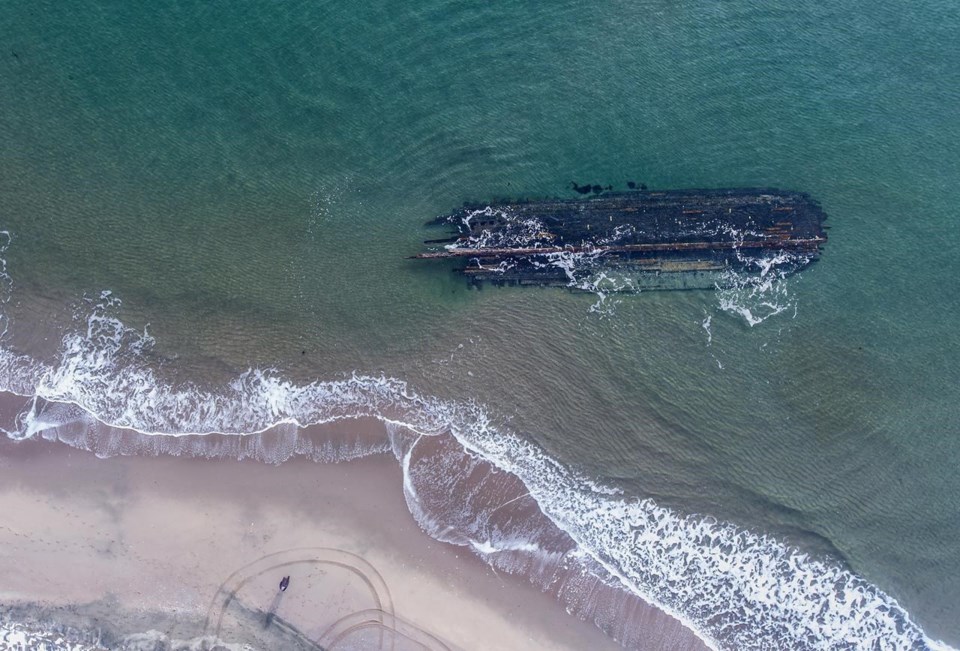ST. JOHN'S, N.L. — Residents in southwestern Newfoundland are worried a shipwreck that has captured the province’s imagination will be washed out to sea before experts can uncover its story.
Bert Osmond says he regularly visits the ragged, overturned hull that emerged more than a week ago off the beach in Cape Ray, N.L., a community of about 250 people on Newfoundland's southwestern tip. On Monday afternoon, he noticed the ghostly wreck had moved down the beach by about 30 metres from the evening before, likely carried by the powerful tides.
Osmond said he and a few others, including divers in the area, are devising a plan to tie it down without causing further damage.
"A lot of people's concern is, we don't want it to go back out to sea," he said in an interview Monday night. "If it goes back out to sea, we're not going to know nothing."
The wreck was first noticed by a hunter in the area, who spied a long, dark shadow in the water just off the sandy beach. Experts and residents have speculated that it may have been unearthed by the 2022 post-tropical storm Fiona, which destroyed about 100 houses and gouged away large expanses of shoreline in the region.
The storm's pounding waves may have dislodged the ship from its sandy grave, and subsequent storms may have uncovered it enough to be seen.
One local shipwreck expert has speculated it may be from the 19th century, given the size of its planks and the wooden and copper nails holding them together.
Jamie Brake, Newfoundland and Labrador's provincial archeologist, said he'd rather not hazard a guess before he examines the wreck. So far, the timing of the tides has made that difficult. He and his team can only have full access to the ship at low tide, and at the moment the tides are lowest before dawn and after sunset.
But by the end of the week, low tide will be later in the morning, and Brake said they're aiming to make the 900-kilometre drive from St. John's on Friday so they can get to work Saturday.
"We're in a difficult spot, between the pressure to get out and the realization that there's not a whole lot we can do unless conditions are right," Brake said.
"I know that local people are very anxious for us to come out immediately," he added.
He hopes to take two other experts and a load of cameras, including a drone, to document the wreck from its keel to the pegs holding it together. They'll also take samples of its wooden planks, in hopes of using tree-ring dating or other techniques to estimate the vessel's age. The type of wood may also provide clues about the ship's story, Brake added.
He hopes they'll be able to look under the overturned hull to see what may be inside it, though he admitted that could be a challenge: the wreck is around 25 metres long, and it's likely very heavy.
The community's response — their care for the wreckage, their desire to have it identified and preserved — underscores how important this kind of work can be, not just for the province's history, but for people's sense of connection to the past, Brake said. However, he cautions it may be difficult to put a name to the vessel and tell its story completely.
Osmond says residents in the area understand the danger wrought by the sea and they feel a connection to the wreck. They also see it as part of their history.
"I was amazed with her, and I still am," Osmond said. "It's there, and we'd love to keep it there."
This report by The Canadian Press was first published Jan. 30, 2024.
Sarah Smellie, The Canadian Press



